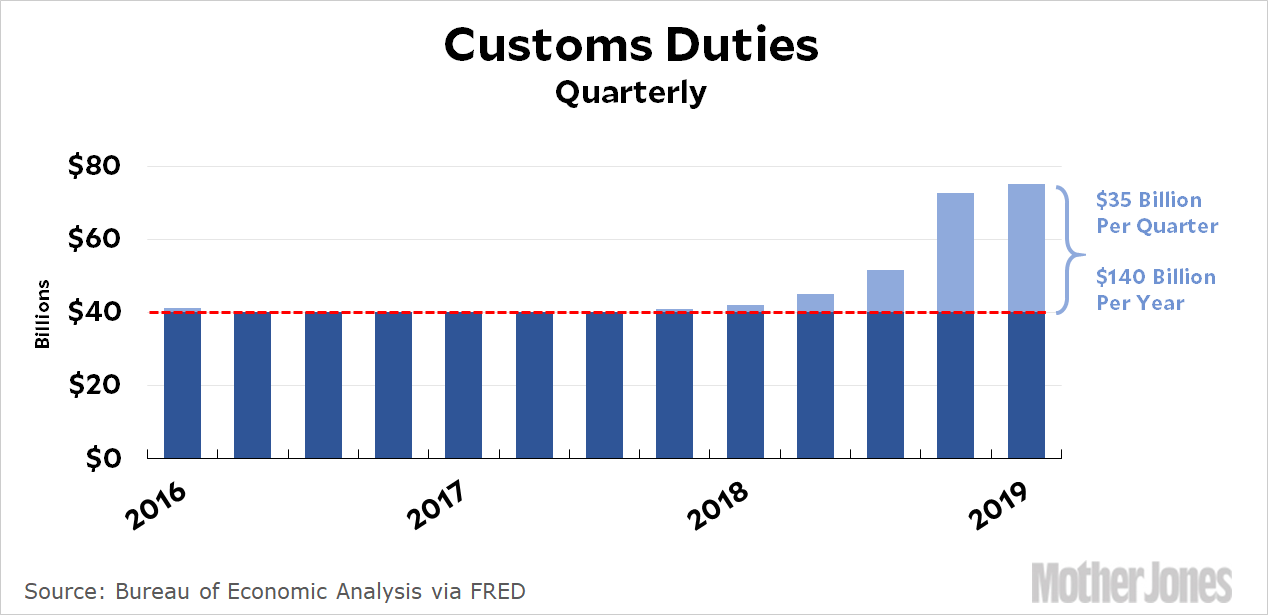Here are quarterly tariff receipts over the past few years:

Tariffs normally run about $40 billion per quarter. In the latest quarter, thanks to Trump’s tariffs, that was $35 billion higher. This amounts to $140 billion per year.
These tariffs are paid by US companies that import goods and are then passed along to consumers as higher prices. There are currently 130 million households in the United States, which means that Trump’s tariffs are costing the average household in America more than $1,000 per year.
It’s actually more than that, since the tariffs probably also have a negative impact on wages and GDP growth. But without even doing any fancy math to account for that, we’ve still got a simple cost of $1,000 per household to pay for Trump’s trade war. I hope all those working-class folks who voted for Trump because he said he’d look out for them are starting to figure out that it was a con all along. A thousand dollars is a lot of money.













